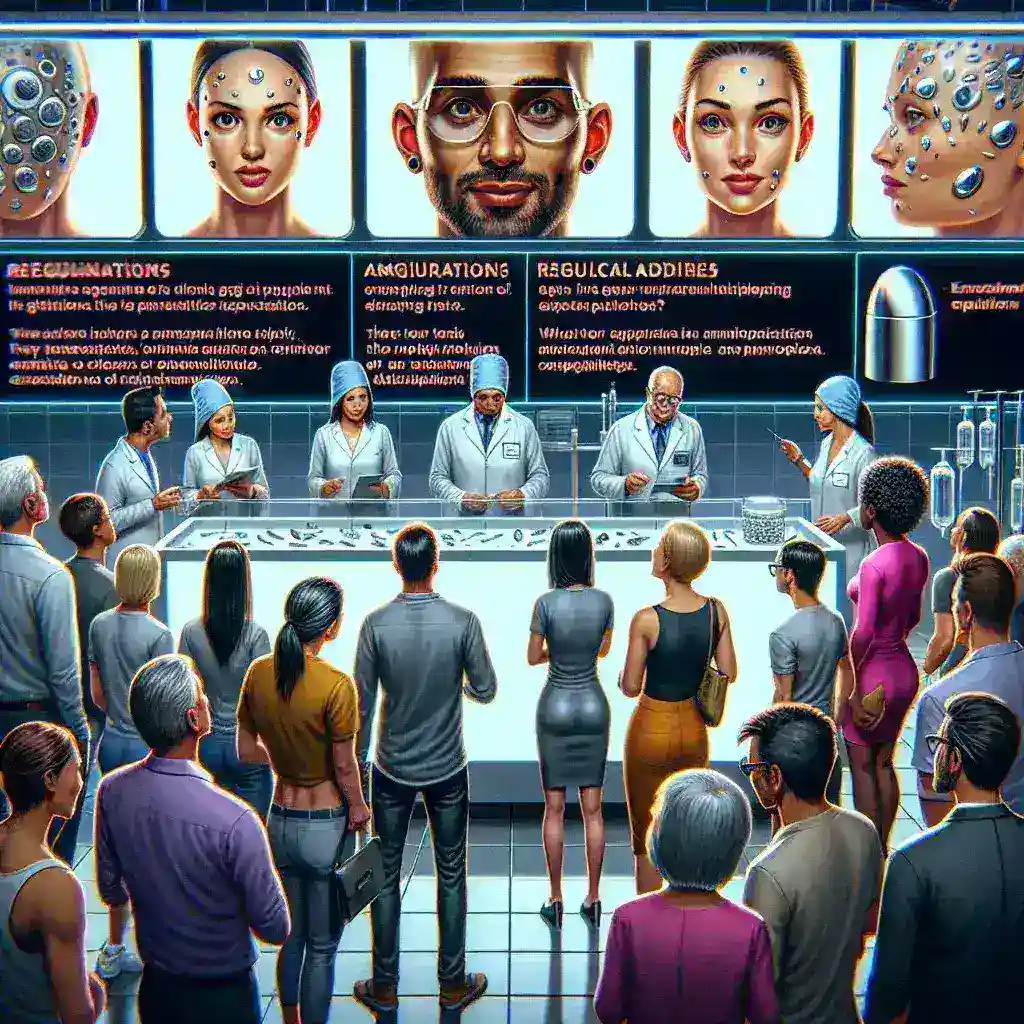Introduction
In recent years, biohacking implants have emerged as a fascinating intersection of technology and human biology, attracting a growing community of enthusiasts and innovators. As individuals explore ways to enhance their physical and cognitive capabilities, regulatory uncertainties surrounding these advancements have sparked intense discussions. This article delves into the rising popularity of biohacking implants, the associated risks, and the implications of regulatory challenges.
Understanding Biohacking Implants
Biohacking implants refer to devices and technologies that are embedded into the human body, often with the goal of improving functionality or altering biological processes. These implants can range from RFID chips that facilitate cashless transactions to more complex devices that monitor health metrics or even enhance sensory capabilities.
History of Biohacking
The concept of biohacking isn’t entirely new. It can be traced back to the early 2000s when individuals began experimenting with various technologies to augment their natural abilities. However, the rise of affordable and accessible technology in the last decade has accelerated the trend. Early adopters, often referred to as ‘grinders,’ have paved the way for a broader audience to explore this intriguing field.
Popular Types of Biohacking Implants
- RFID Chips: These small chips enable users to unlock doors, make payments, and store personal data securely.
- Magnetic Implants: Often placed under the skin, these implants allow users to sense magnetic fields, providing a unique sensory experience.
- Health Monitoring Devices: Implants that continuously track biometric data, such as heart rate and glucose levels, helping users maintain better health.
- Neural Implants: Experimental devices that aim to enhance cognitive functions or interface directly with digital devices.
The Allure of Biohacking Implants
The appeal of biohacking implants lies in the promise of self-enhancement and longevity. Many individuals are drawn to the idea of becoming “superhuman” through technology, and the community often celebrates stories of personal achievement. For example, stories of individuals who have successfully integrated RFID chips into their bodies to streamline daily tasks exemplify the potential benefits.
Personal Anecdotes
Take, for instance, the case of a tech enthusiast named Jane, who implanted an RFID chip in her hand. She now effortlessly opens her doors, logs into her computer, and even pays for her coffee with a simple wave of her hand. Jane describes the experience as liberating and believes that it has significantly simplified her life.
Regulatory Uncertainty
Despite the increasing popularity of biohacking implants, regulatory uncertainty looms large over the industry. The lack of clear guidelines raises several concerns regarding safety, efficacy, and ethical implications.
Current Regulatory Landscape
As of now, many biohacking implants fall into a gray area of regulation. In some regions, these devices are classified as medical devices, requiring extensive testing and approval before they can be marketed. In other places, they may not fit into any existing categories, leading to confusion.
Challenges Faced by Innovators
Innovators in the biohacking space often struggle to navigate these murky waters. Some may opt to self-regulate or create devices without waiting for official approval, which can lead to potential safety risks. The challenge lies in balancing innovation with the necessity of consumer protection.
Pros and Cons of Biohacking Implants
As with any emerging technology, biohacking implants come with their own set of advantages and disadvantages.
Pros
- Enhanced Capabilities: Users can improve their daily lives through increased convenience and functionality.
- Health Monitoring: Continuous health tracking can lead to better health management and early detection of medical issues.
- Innovation Potential: Biohacking sparks creativity and innovation, pushing the boundaries of what is possible.
Cons
- Health Risks: Invasive procedures carry inherent risks, including infection and complications.
- Lack of Regulation: The absence of clear guidelines can result in unsafe products entering the market.
- Ethical Concerns: The desire to enhance human capabilities raises questions about what it means to be human and the potential for inequality.
Future Predictions for Biohacking Implants
The future of biohacking implants appears vibrant yet uncertain. As technology continues to advance, we can expect to see more innovative applications, but the path forward must consider regulatory frameworks.
Potential Developments
Experts predict that as the demand for biohacking implants grows, regulatory bodies may begin to create more structured guidelines. This could lead to safer products and increased consumer confidence. Additionally, advancements in technology may enable the development of implants that seamlessly integrate with the human body, leading to new possibilities for enhancement.
Cultural Relevance
Biohacking implants also reflect broader cultural trends. The movement embodies a desire for autonomy over one’s body and the ability to control one’s health destiny. It resonates with a growing population that seeks to optimize their lives through technology.
The Community and Support Networks
As interest in biohacking grows, so does the community surrounding it. Online forums and local meetups provide platforms for individuals to share experiences, knowledge, and support. These networks foster a collaborative environment where people can learn from each other’s successes and challenges.
Conclusion
In conclusion, the world of biohacking implants is rapidly evolving, gaining traction among those eager to push the boundaries of human capability. Despite the associated regulatory uncertainties, the potential for innovation and enhancement remains compelling. As society navigates the complexities of this technology, it will be crucial to consider the balance between innovation and safety, ensuring that the future of biohacking implants is both exciting and responsible.
Call to Action
If you’re interested in exploring the world of biohacking implants further, consider joining a local biohacking group or participating in online discussions. Staying informed and engaged can empower you to make informed decisions about your own biohacking journey.

